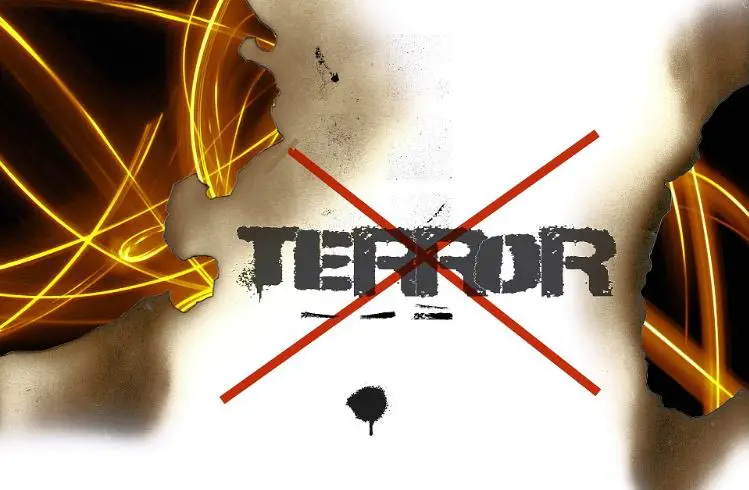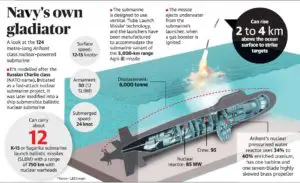 Genesis and Different types of Terrorism in World | UPSC – IAS
Genesis and Different types of Terrorism in World | UPSC – IAS
Terrorists are motivated by different goals and objectives. Depending on the objectives of the group/groups, the nature of terrorism also differs. The major types of terrorist operations commonly identified globally include:
Ethno-Nationalist Terrorism | UPSC – IAS
- Terrorism motivated by ethno-nationalist and separatist aspirations became prominent only after the Second World War and dominated the terrorist agenda around the world for more than 50 years until religious terrorism came to occupy the centre stage. Ethnic terrorism can be defined, as deliberate violence by a subnational ethnic group to advance its cause.
- Such violence usually focuses either on the creation of a separate State or on the elevation of the status of one ethnic group over others. Tamil Nationalist groups in Sri Lanka and insurgent groups in North East India are examples of ethno-nationalist terrorist activities.
Religious Terrorism | UPSC – IAS
- Present day terrorist activities around the world are motivated largely by religious imperatives. The practitioners of terrorism motivated either in whole or in part by a religious imperative consider violence as a divine duty or a sacramental act. It embraces different means of legitimisation and justification compared to other terrorist groups, and these distinguishing factors make religious terrorism more destructive in nature. Religious terrorism can be initiated by both a minority and a majority religion or sect of a nation.
Ideology Oriented Terrorism | UPSC – IAS
Any ideology can be used to support the use of violence and terrorism. Ideology oriented terrorism is generally classified into two: Left-wing and Right-wing terrorism.
- (a) Left-wing Terrorism- Violence against the ruling elite mostly by the peasant class motivated by what is called leftist ideologies have occurred time and again in history. However, a concrete ideological base for the left and subsequent violent movements was inspired by the writings of Marx and Engels. This was supported by the writings and speeches of later communists like Lenin and Mao Tse-tung (Mao Zedong). Leftist ideologies believe that all the existing social relations and state structures in the capitalist society are exploitative in character and a revolutionary change through violent means is essential. Examples of leftist ideologies that have resorted to the use of terror are numerous. These include; the Red Army Faction or Baader Meinhof Gang in the former West Germany, the Red Brigades in Italy, the 17 November Movement in Greece, the Shining Path of Peru, People’s Revolutionary Army and the Montoneros of Argentina and the Maoist groups in India and Nepal are the most easily identifiable groups closer home.
- (b) Right-wing Terrorism- Right-wing groups generally seek to maintain the status-quo or to return to some past situation that they feel should have been conserved. Sometimes groups espousing rightist ideologies might assume ethnic/racist character too. They may force the government to acquire a territory or to intervene to protect the rights of an ‘oppressed’ minority in a neighboring country, (i.e : the Nazi Party in Germany). Violence against migrant communities also comes under this category of terrorist violence. Examples of these are: Nazism in Germany, Fascists in Italy, white supremacy movements in the US known as Ku Klux Klan (KKK), the Green Jackets of Denmark in the 1980s etc.
State-sponsored Terrorism | UPSC – IAS
- State-sponsored terrorism or warfare by proxy is as old as the history of military conflict. However, state-sponsored terrorism on a massive scale reappeared in international politics in the 1960s and 1970s, and today along with religious terrorism, state sponsored terrorism has considerably altered the nature of terrorist activities around the world.
- In recent times, some countries have embraced terrorism as a deliberate instrument of foreign policy. One distinction of state sponsored terrorism from other forms of terrorist activity is that it is initiated to obtain certain clearly defined foreign policy objectives rather than grabbing media attention or targeting the potential audience. In a cost-benefit analysis, state-sponsored terrorism is the most effective means of terrorism from the perspective of the perpetrator.
- State-sponsored terrorism was widely employed in Central Asia in the nineteenth century. Russians supported their fellow Slavs in the Balkans. Bulgaria used the Macedonian revolutionary terrorists against Yugoslavia after World War I. The Western powers under the auspices of the US supported all kinds of nationalist and anti-communist rebels throughout the Cold War. The Soviet Union was no different in its operations during this period. Countries like Iran, Iraq, Sudan, Libya North Korea have been engaged in sponsorship of political violence of different nature in their ‘enemy’ countries. India has been facing this problem from Pakistan since Independence.
Narco-terrorism | UPSC – IAS
- The term was first used in 1983 by the former President of Peru, Belaunde Terry to describe campaigns by drug traffickers using terrorist methods such as the use of car bombs, assassinations and kidnapping against the anti-narcotics police in Colombia and Peru. Though initially used in the context of drug trafficking related terrorism in South America, the term has come to be associated with terrorist groups and activities around the world and more so in the Central and South-East Asia.
- Narco-terrorism has been defined as `the attempt by narcotics traffickers to influence the policies of the Government by systematic threat or use by violence’. However, it is also possible to view narco-terrorism as a means of terrorism or at any rate as a means of funding terrorism. As the term itself suggests, narco-terrorism combines two criminal activities; drug trafficking and terrorist violence. Narco-terrorism is motivated mainly by economic reasons as it helps the terrorist organizations raise huge sums of money with minimum cost for their activities. Thus the political, ideological, religious and the ethno-nationalist motives generally associated with terrorism are secondary to the economic gains associated with it.
- In a survey conducted by the United Nations, links between drug traffickers and terrorist groups were observed in 19 out of 38 countries. These countries include Algeria, Colombia, Comoros, Ecuador, Germany, Guernsey, India, Italy, Japan, Kenya, Kyrgyzstan, Lithuania, Mauritius, Saudi Arabia, Turkey, the United Kingdom, the United States of America, Uzbekistan and Yemen. Major terrorist groups operating on these lines in these countries are: Al Qaeda, the Colombia-based AUC (United Defences of Columbia), ELN (National Liberation Army), Colombia, and FARC (Revolutionary Armed Forces of Colombia), the tri-border Islamic Group in Argentina, Paraguay and Brazil, the Shining Path in Peru, the PKK (Kurdistan Workers Party) in Turkey, IMU (Islamic Movement of Uzbekistan) in Uzbekistan, the Islamic Jihad in Palestine, Hezbollah in Lebanon, and the RIRA (Real Irish Republican Army) in Northern Ireland. Islamist terrorist groups in India supported by the Pakistan ISI are reported to be active in drug trafficking along the Kashmir Valley and also in other parts of the country.



